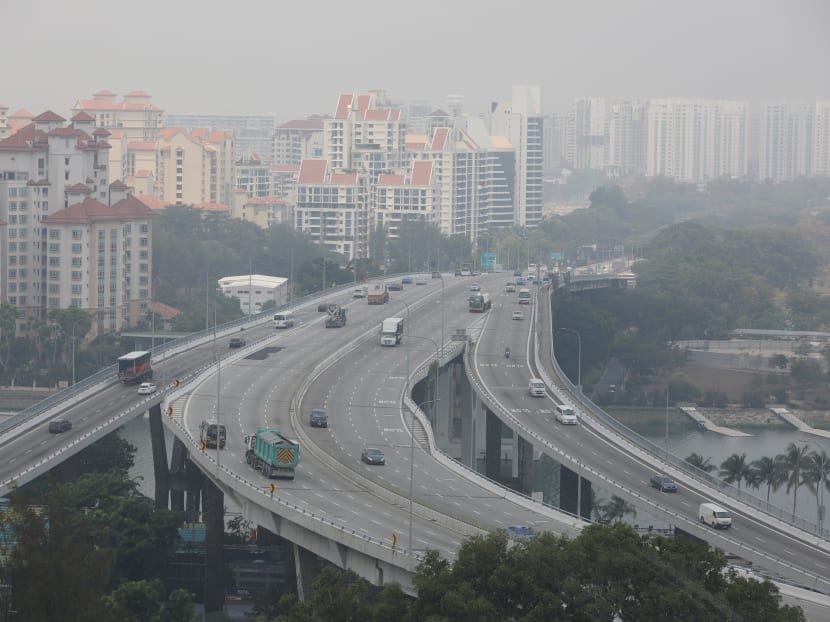Slight haze gathers over parts of Singapore after hot spot detected in Johor
SINGAPORE — Parts of Singapore experienced slightly hazy conditions on Tuesday (March 2) morning, with a smoky smell lingering in the air, after a hot spot with a smoke plume was detected in neighbouring Johor, Malaysia the day before.
SINGAPORE — Parts of Singapore experienced slightly hazy conditions on Tuesday (March 2) morning, with a smoky smell lingering in the air.
This was after a hot spot with a smoke plume was detected in neighbouring Johor, Malaysia the day before.
The National Environment Agency (NEA) said in a Facebook post that prevailing northeasterly winds blew the plume, detected late on Monday afternoon, towards Singapore before dissipating that evening.
“The prevailing winds over Singapore are expected to continue blowing from north to northeast for the next few days,” NEA said.
It added that slightly hazy conditions and the smell of smoke may still be expected over parts of Singapore on Tuesday.
Between 6am and 7am on Tuesday, the one-hour PM2.5 readings — which indicate present air quality — entered the second band (elevated) in the eastern region of Singapore, hovering between 65 and 68 micrograms per cubic metre. The readings measure the concentration of particles smaller than 2.5 microns.
By 8am, they had returned to the first band (normal), with a reading of 36 micrograms per cubic metre.
The PM2.5 concentration scale has four bands: 0 to 55 micrograms per cubic metre (normal), 56 to 150 (elevated), 151 to 250 (high), and above 250 (very high).
As of 11am, the 24-hour Pollutant Standards Index (PSI) was at 61 to 74, in the moderate range. Air quality is in the moderate band when the PSI is between 51 and 100, and Singaporeans may go ahead with their normal activities.
The 24-hour PSI entered “unhealthy” levels last Saturday, hitting 102 in the northern part of Singapore.
In response to TODAY’s queries, NEA said that this was due to heightened levels of ozone.
The agency noted that the maximum ambient temperature on Saturday was 35.3°C — the highest recorded for the northern region this year.
“This coupled with the high UV (ultraviolet) levels could have contributed to the elevated ozone levels, reaching the ‘unhealthy’ range,” it said.
NEA said it would keep watch on the situation and provide updates when necessary.









